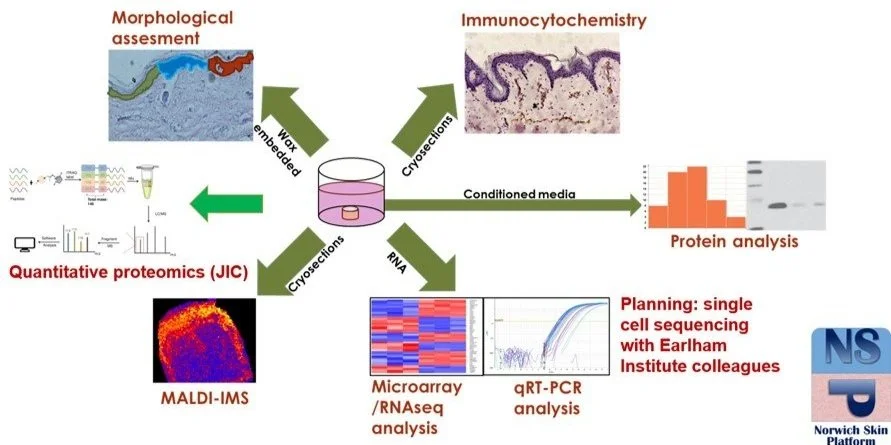-
Norwich Skin Platform Inflammation Model (NSPinflam)
We have developed NSPinflam, a prototype inflammatory skin disease assay. NSPinflam is an excellent system for testing pharmaceuticals/nutriceuticals for anti-inflammatory effects for disorders such as Atopic dermatitis (AD).
-
Norwich Skin Platform Wound Healing Model (NSPwoundhealing)
Using our experience of using human skin as a model to study normal and inflammed cutaneous skin conditions we have developed an ex vivo model system to allow analysis and testing of modulators of the re-epithelialisation process.
-
Norwich Skin Platform Bacterial infection Model (NSPinfex)
Our newest model, currently in development! However, we are happy to advise if a bespoke testing model is required.
-
In Vitro cell based assays
We carry out time lapse microscopy to study cell migration.

What We Offer
We offer analysis of full thickness normal human skin explants as a highly biologically relevant model of skin morphology and response to endogenous and exogenous stimuli. We have extensive expertise in the development and use of full thickness skin models, hold established relationships with other academic centres of excellence, and offer a unique and valuable range of services from experimental design, a variety of analytical methods and advice on interpretation of results.
With access to ethically sourced surgical skin direct from The Norfolk and Norwich University Hospital we are able to produce large numbers of skin explants (typically 100-150 explants/skin sample). These can be cultured for up to 8 days in defined medium either submerged or at the liquid-air interface to allow a range of treatment procedures mimicking topical or systemic exposure. The number of biopsies we can achieve from each individual donor allows for a truly scalable analysis of response leading to robust and reliable data.
Our ex vivo model systems has more biological relevance than other commonly used reconstituted skin or cell-based assays. This is due to the skin biopsies retaining the spatial relationships between cells and their extracellular environment that can localise responses to specific regions or cell types found in human skin. This has much greater biological relevance than other available skin testing systems, which rely on cell lines, isolated keratinocytes or mixtures of cells lacking minor subpopulations and normal structure.
We are currently offer a number of model systems that have been developed and characterised to study a range of skin responses and conditions:

